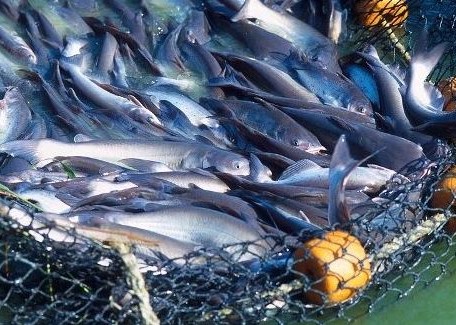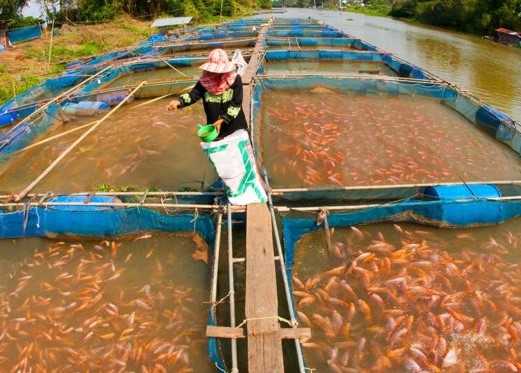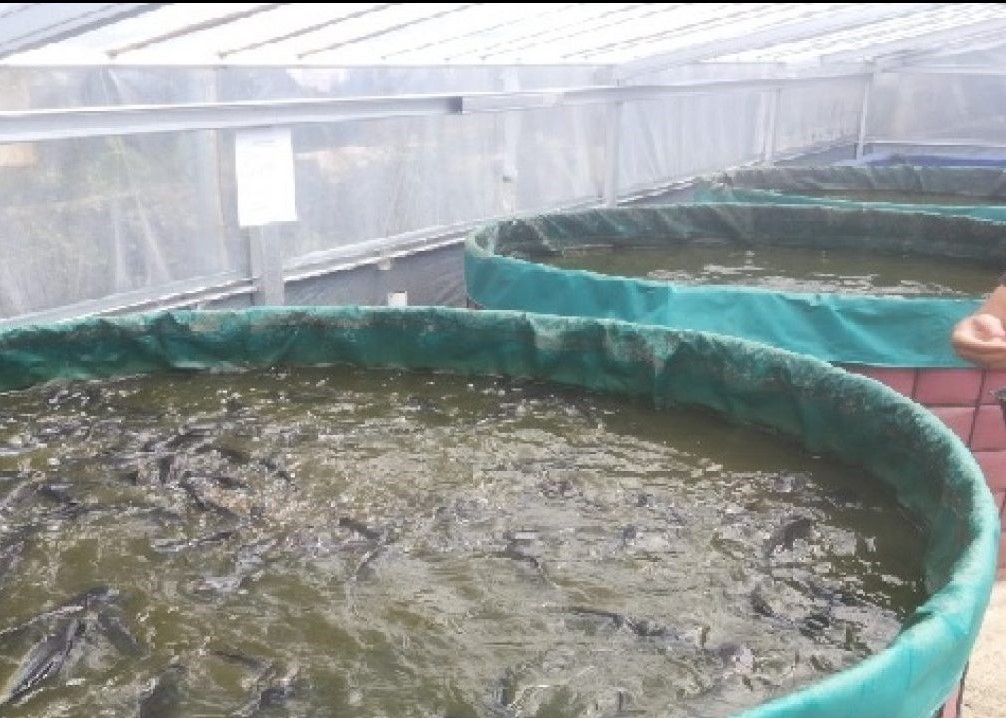
Introduction
With almost seven billion people on earth, the demand for aquatic food carries on to increase and hence, expansion and inten-sification of aquaculture production are highly required. The prime goal of aquaculture expansion must be to produce more aquaculture products without significantly increasing the usage of the basic nat- ural resources of water and land (Avnimelech, 2009). The second goal is to develop sustainable aquaculture systems that will not damage the environment (Naylor et al., 2000). The third goal is to build up systems providing an equitable cost/benefit ratio to support economic and social sustainability (Avnimelech, 2009). All these three prerequisites for sustainable aquaculture development can be met by biofloc technology.
The strengths of biofloc technology
Biofloc technology makes it possible to minimize water exchange and water usage in aquaculture systems through maintaining ade- quate water quality within the culture unit, while producing low cost bioflocs rich in protein, which in turn can serve as a feed for aquatic organisms (Crab, 2010; Crab et al., 2007, 2009, 2010a). Com- pared to conventional water treatment technologies used in aquacul- ture, biofloc technology provides a more economical alternative (decrease of water treatment expenses in the order of 30%), and addi- tionally, a potential gain on feed expenses (the efficiency of protein utilization is twice as high in biofloc technology systems when Inorganic N Biofloc Feed + C source Inorganic N Feed Inorganic N Biofloc + C source C source C source Culture unit (+ aeration and mixing) Culture unit Bioflocs reactor (aeration + mixing) A B feed by the animals.
The use of bioflocs as a feed for aquaculture species
In addition to the growing demand for seafood for human con- sumption, the demand for
aquatic products used by the industrial sector for conversion into fishmeal and fish oil
products also increases (Péron et al., 2010).
Fishmeal and fish oil are used as feed for other human food supply systems, such as
poultry, pigs and aquaculture. Hitherto, part of the aquaculture production relies on
wild fish har- vests, as fishmeal and fish oil are essential elements of the diet of many
aquaculture species, both carnivorous and herbivorous fish and shrimp.
About 5–6
million tonnes of low-value/trash fish are used as direct feed in aquaculture worldwide
either provided without processing or as part of farm-made feeds (FAO, 2009). FAO
(2009) reported that the total amount of fishmeal and fish oil used in aquafeeds is
estimated to have grown more than threefold between 1992 and 2006, from 0.96 million
tonnes to 3.06 million tonnes and from 0.23 million tonnes to 0.78 million tonnes,
respectively. For the 10 types of fish most regularly farmed, a mean of 1.9 kg of wild
fish is required for every kilogram of fish produced (Naylor et al., 2000).
In terms of fishmeal, many intensive and semi-intensive aquaculture systems use 2 to 5
times more fish protein to feed the farmed species than is supplied by the farmed
product (Naylor et al., 2000). There- fore, research in recent times has focused on
the development of feed substitution strategies with a minimal supply of fishmeal and
fish oil, which are then replaced by alternative and cheaper sources of protein such as
plant proteins.
In contrast to intensive and semi- intensive systems, extensive and traditional
systems already use little or no fishmeal, and farmers often supply nutrient-rich
materials to the water to enhance growth of algae and other indigenous organ- isms on
which the fish can feed (Naylor et al., 2000). This inspired re- searchers to develop
the biofloc technology, which is also applicable to intensive and semi-intensive
systems.
With biofloc technology, where nitrogenous waste generated by the
cultivated organisms is converted into bacterial biomass (containing protein), in situ
feed production is stimulated through the addition of an external carbon source
(Schneider et al., 2005). Although bioflocs show an adequate protein, lipid,
carbohydrate and ash content for use as an aquaculture feed (Crab et al., 2010a), more
research is needed on their amino acid and fatty acid composi- tion. Now, fishmeal and
fish oil supply essential amino acids (such as lysine and methionine) that are deficient
in plant proteins and fatty acids (eicosapentanoic acid and docosahexanoic acid) not
found in vegetable oils (Naylor et al., 2000). Herbivorous, omnivorous and car-
nivorous finfish all necessitate about the same amount of dietary protein per unit
weight, but herbivorous and omnivorous species uti- lize plant-based proteins and oils
better and they require minimal quantities of fishmeal to supply essential amino acids
(Naylor et al., 2000).
However, compound feeds for omnivorous fish often exceed required levels (Naylor et
al., 2000). On the other hand, lowering the input of wild fish required for production
of farmed carnivorous fish seems not feasible at this time. As already discussed above,
it is very important to inform the farmers clearly and thoroughly, at this juncture
about feeding strategies and management. New initiatives by governments and funding
organizations are needed that can act as incentives for aquaculture to augment farming
of low trophic level with herbivorous diets in stead of high-value, carnivorous fish
that increases the need for fishmeal and fish oil, which in turn could place even more
stress on pelagic fisheries, resulting in high feed prices and damage to marine
ecosystems (Naylor et al., 2000). Con- comitantly, more research is needed regarding
feed replacement strategies such as using vegetable oils, meat byproducts and also
bio- floc technology. With biofloc technology, one also needs to consider that the
choice of cultivated species should take into account their ca- pability of dealing
with high suspended solid concentrations, since this negatively affects certain fish
species. Another important factor that is essential for the growth and sur- vival of
aquaculture species are vitamins. We measured before vita- min C concentrations in
bioflocs ranging from 0 to 54 μg/g dry matter (Crab, 2010).
These values are below the required concentra- tion for fish and shrimp. Besides
vitamin C, other vitamins such as thi- amine, riboflavin, pyridoxine, pantothenic acid,
nicotinic acid, biotin, folic acid, vitamin B12, inositol, choline, vitamin A, vitamin
D3, vita- min E and vitamin K, are usually not sufficiently synthesized by the cultured
organism either and need to be supplied through the feed.
Hence, it needs to be established to what extent bioflocs can contrib- ute to the
supply of these essential nutrients. Several studies were performed on the use of
bioflocs as an in situ produced feed and they indicate that bioflocs can be taken up by
aquaculture species and uptake depends on the species and feeding traits, animal size,
floc size and floc density (Avnimelech, 2009; Crab, 2010; Crab et al., 2009, 2010a).
Our previous work revealed that giant freshwater prawn (Macrobrachium
rosenbergii), whiteleg shrimp (Litopenaeus vannamei) and tilapia (Oreochromis
niloticus× Oreochromis aureus) were all able to take up bioflocs and profit from this
additional protein source. This indicates that biofloc tech- nology is applicable to
both freshwater and seawater systems, both to control water quality and to produce as
an additional feed source in situ.
The potential feed gain of the application of
biofloc technology is estimated to be in the order of 10–20% (De Schryver et al.,
2008). With this, production costs will decline considerably since food represents
40–50% of the total production costs (Craig and Helfrich, 2002). A variety of
beneficial features can be ascribed to biofloc technol- ogy, from water quality control
to in situ feed production and some possible extra features.
Biofloc technology offers aquaculture a sus- tainable tool to simultaneously address
its environmental, social and economical issues concurrent with its growth.
Researchers are chal- lenged to further develop this technique and farmers to
implement it in their future aquaculture systems.
The basics of the technology is there, but its further development, fine-tuning and
implementation will need further research and development from the present and fu-
ture generation of researchers, farmers and consumers to make this technique a
keystone of future sustainable aquaculture.






